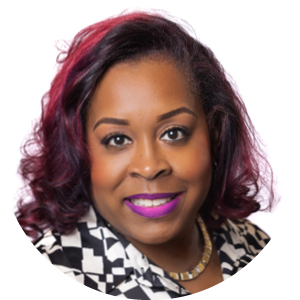
Melanie Collins is director of human resources, talent, and culture at the International African American Museum in Charleston, South Carolina, which opened in June 2023. As a human resources department of one, Collins has been busy growing the museum staff from 20 people to about 75 people in the past two years.
Now her focus is shifting to building the training and development program for the second-largest African American museum in the United States—and she said the Strength Deployment Inventory® will be at its foundation.
“The SDI really is a holistic tool,” said Collins. “It’s not just for workplace. It is a life-altering, life-affirming opportunity to create your best self… This museum is amazing, and my staff is incredible. We are a nonprofit, so we don’t work for the money, we work for the passion and the mission of the organization, but I don’t want my staff to get weary in well-doing. I want them to have the resources that they need in order to evolve and to continue to move our mission forward, but also for them to grow and succeed.”
When Collins was invited to participate in the SDI certification beta course (the final step in Crucial Learning’s product team’s process when launching a new course), she saw the opportunity to compare the assessment to DISC, another assessment the museum used last year. Collins said she wanted to see which assessment would be better received by her management team.
“Where I want to start with the SDI is for people to understand their management style and how to be emotionally intelligent enough to pivot and shift when they need to, communicating with other people or having the difficult conversation and knowing how to manage their staff,” she said.
After experiencing the SDI certification course, Collins said she found the SDI the better of the two assessments, thanks to its four views of a person: Motivational Value System, which looks at how an individual is motivated by people, performance, or process; Conflict Sequence, which looks at how people respond in conflict (assert, accommodate, or analyze); the strengths portrait, which ranks 28 strengths by how much that person uses them; and Overdone Strengths Portrait, or how those same 28 strengths may cause problems when overdone.
The SDI uses an anchor-and-buoy analogy to explain these four views. People see behaviors—or the strengths and overdone strengths—like buoys on the surface, and those can shift and move with winds. But they are always tied to a fixed anchor, which is one’s motivational value system and conflict sequence. These aren’t likely to change but are deeply rooted to a person’s core.
Collins said she appreciated how these four views provide a comprehensive and adaptable view of a person, celebrating who they are at their core while making space for growth.
“Being able to have that visual and understand who you are at your core—and knowing that things change based on your experiences—made sense,” she said. “While you’re going to stay true to who you are based on the experiences and encounters that you have, your response is going to change as you mature, as you go through different jobs and different responsibilities. You’re still who you are at your core, but the way that you deal with external situations is possible to change. I think that, in and of itself, was better explained than in the DISC profile, which seemed so hard and set into an ID style.”
Collins said she especially appreciated how the SDI leans into who someone is at their core without judgment.
“There’s nothing wrong with it,” she said. “This is the opportunity to build on that and create a better you. The more I learn about myself, the more I can self-govern when situations arise. Where previously I might normally, I don’t know, pop off or say something before I think about it, now I think about, okay, what is being said? What is really meant, and how am I going to respond? And when I respond, how will that impact the situation? And I want people to start being able to break things down like that.”
Collins said she plans to leverage the SDI with leadership in both group discussions and individual coaching sessions, kicking off the new year with a new direction and new vision of how to lead.
“I really believe that self-awareness is so critical, to know who you are and to be confident in who you are—and the SDI gives you that, especially when you get the strength portrait. You see what your best assets are, you build on those, but you also see areas that may not always bubble up to the top and how you can work to improve those. It doesn’t mean that it’s not a strength, but what it does mean is it’s something that you can work on to improve.”
One of the SDI’s strengths, Collins said, is tying into what motivates people—and then seeing what motivates colleagues in order to better communicate and collaborate with them.
“Having a value system—that is so important. And I think it’s received better than just saying that you’re an ID style, and this is what you are,” she said. “When you speak to someone having a value system, it’s speaking to the core of who they are. And I think that is better received than just saying ‘this is your profile.’ I like using the word ‘strength.’ I like the fact that those strengths that may not be the best are not called weaknesses, but overdone strengths. Sometimes you may overdo it. That is better received when you’re communicating to someone.”









